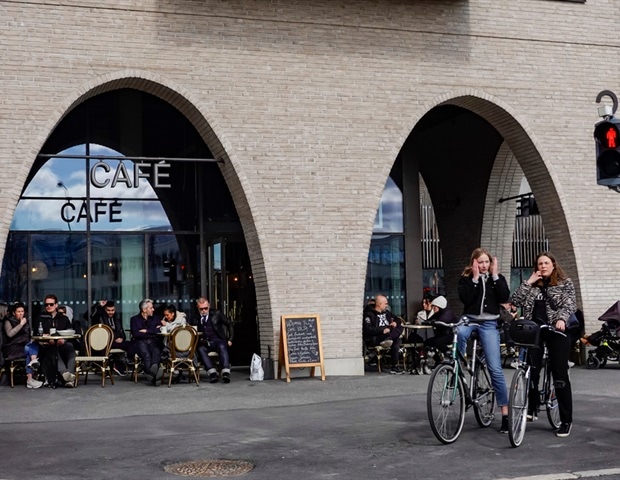In a new study, Swedish researchers speculate the effects of the present intervention strategies on the healthcare system as the COVID-19 pandemic affects the nation. Their study titled, “Intervention strategies against COVID-19 and their estimated impact on Swedish healthcare capacity,” has not been published yet; however, the findings are available as pre-peer-reviewed study at medRxiv.

What was the study about?
The COVID-19 pandemic has spread across the globe, and at present many nations have adopted a non-pharmaceutical intervention of lockdowns and social distancing to prevent the spread of this highly infectious virus. They note that the range of hospitalization rates according to age is between 1 and 70 percent in the United States and between 0.04 to 18.4 percent in China. They conclude that this means that “the total number of people requiring hospitalization will exceed the total number of beds available in many countries.” To combat the speed of the pandemic with resources such as intensive care beds and ventilators, thus is critical, they wrote. This has been noted from the data gathered from China, Italy, and Spain. This is also crucial they explain because “many COVID-19 pneumonia patients die from severe respiratory diseases including acute respiratory distress syndrome (ARDS).”
The team of researchers wrote, “Most European countries have enacted strict suppression measures including lockdown, school closures, enforced social distancing, while Sweden has chosen a different strategy of milder.”
They speculate that these strategies of public health interventions could have an impact on the nation’s death rates due to COVID-19 and also affect its healthcare system.
Sweden currently has 14,385 confirmed cases and 1,540 deaths.
What was done?
For this study, the team of researchers used “individual-based transmission modeling” among Swedish participants. The data was obtained from the Swedish demographic and Geographical Information System data.
The model was used to simulate the course of the infection among the 10.09 million Swedish residents. The team looked at the outcome of five different non-pharmaceutical interventions among the population as of 10 April 2020. These include;
- Present Swedish policy Closing schools and universities, social distancing for those over 70 years age, home quarantine for those with symptoms.
- Isolation of the whole household where confirmed cases have been found.
- Closing the schools and other non-essential establishments including businesses and entertainment zones with or without strict social distancing.
- Closing schools and non-essential businesses with strict enforcement of social distancing.
- All schools and non-essential businesses closed and social distancing for the whole population.
The parameters that were calculated in each of these scenarios included;
- Acute care needed.
- Hospitalizations in intensive care units.
- Deaths attributed to COVID-19.
- The rate of infection among health care personnel between 10 April and 29 June 2020.
What was found?
This mathematical model showed that if the present Swedish strategy was continued, there would be a peak of cases requiring intensive care units in May. The team writes that they calculated the capacity of the health care system before the pandemic and calculate that when the peak reaches, it would be forty-fold the pre-pandemic capacity. They estimated that the median peak death rate due to COVID-19 would be 96,000.
The team then writes that if the strictest measures of social distancing were practiced for the entire population, there would be a three-fold reduction in this predicted mortality rate. The requirement of intensive care units could also be reduced by two-fold, the team notes.
They wrote, “Our model predicts that using median infection-fatality-rate estimates, at least 96,000 deaths would occur by 1 July without mitigation. Current policies reduce this number by approximately 15%, while even more aggressive social distancing measures, such as adding household isolation or mandated social distancing can reduce this number by more than 50%.”
The team writes, “Healthcare needs are expected to substantially exceed pre-pandemic capacity even if the most aggressive interventions considered were implemented in the coming weeks.”
Conclusions and future implications
The results reveal that “under conservative epidemiological parameter estimates, current measures in Sweden will result in at least 40-fold over-subscription of pre-pandemic Swedish intensive care capacity”. They also note that at the peak levels of the pandemic hitting the nation, an estimated 15.8 percent of Swedish healthcare workers would be unable to work due to the infection. They concluded, “Modifications to ICU admission criteria from international norms would further increase mortality.”
Future research
The team believes that “if Sweden wishes to change course, prompt and decisive action would be required.” They add that the window for such measures is short, and the efficacy of such suppressive measures has not been studied in detail yet. Real-life experiences on the efficacy of conservative measures vis a vis extreme prevention of social contact should be a knowledge that should not “come at a substantial cost of life,” they wrote.
Intervention strategies against COVID-19 and their estimated impact on Swedish healthcare capacity Jasmine M Gardner, Lander Willem, Wouter van der Wijngaart, Shina Caroline Lynn Kamerlin, Nele Brusselaers, Peter Kasson medRxiv 2020.04.11.20062133; doi: https://doi.org/10.1101/2020.04.11.20062133
